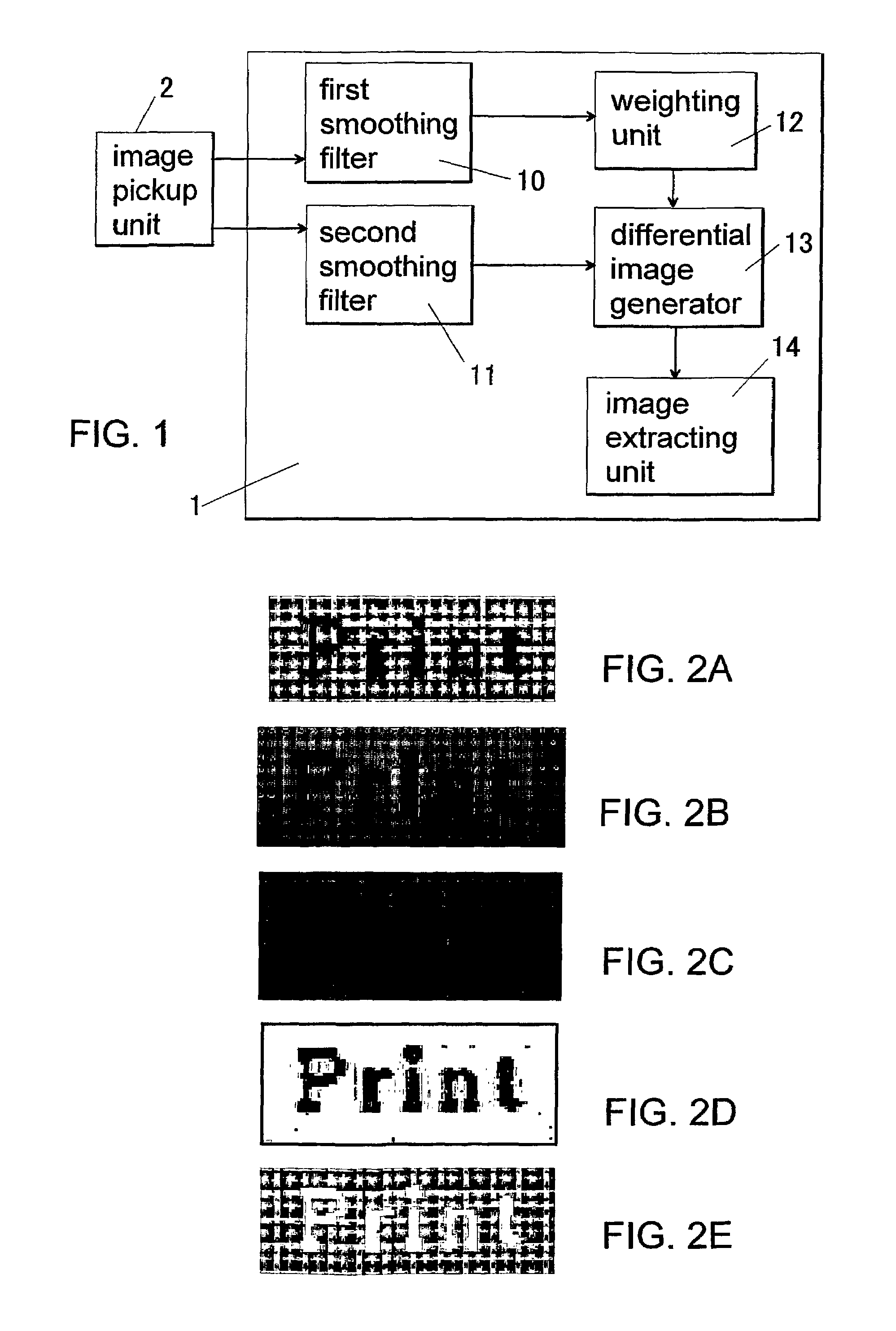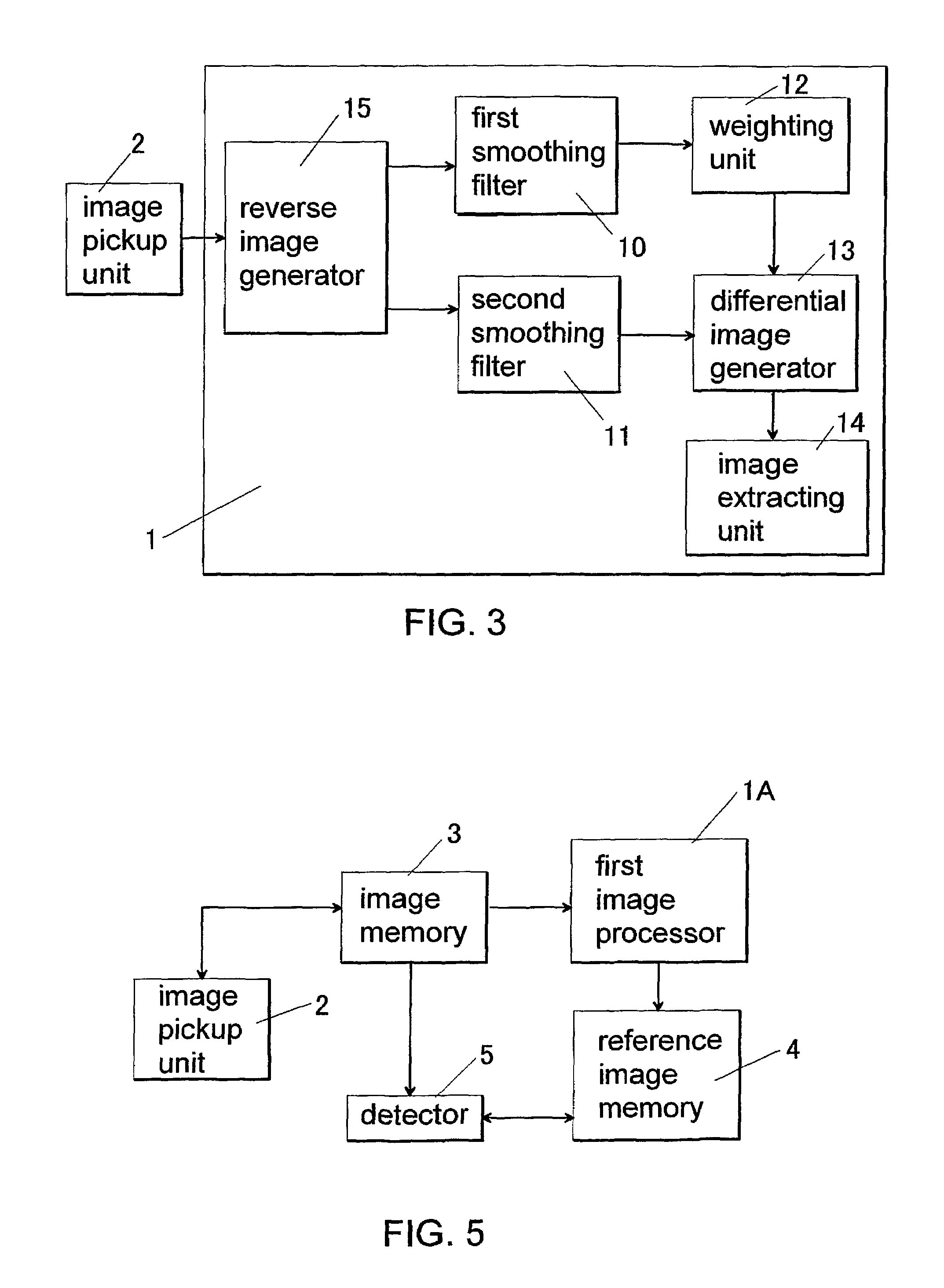Image processor and pattern recognition apparatus using the image processor
a pattern recognition apparatus and image processor technology, applied in image enhancement, image analysis, instruments, etc., can solve the problems of difficult to recognize the alignment mark from the surface image with reliability, the part of the alignment mark cannot be extracted with a high degree of accuracy, so as to achieve the effect of accurate extraction of only the pattern and highlighting the contras
- Summary
- Abstract
- Description
- Claims
- Application Information
AI Technical Summary
Benefits of technology
Problems solved by technology
Method used
Image
Examples
Embodiment Construction
[0046]The followings are preferred embodiments of the present invention. However, these embodiments do not limit the scope of the present invention.
[0047]An image processor 1 of the first embodiment of the present invention is explained referring to FIG. 1 to FIG. 3. An object used in this embodiment has an alignment mark having a lower brightness than a background. A surface image including the alignment mark of the object can be obtained by a conventional image pickup unit 2 such as TV cameras.
[0048]As shown in FIG. 1, the surface image taken by the image pickup unit 2 is sent to each of first and second smoothing filters (10, 11) of the image processor 1. The first smoothing filter 10 determines, with respect to each of pixels of the surface image, a mean concentration value for the pixel and neighbor pixels in a first region defined around the pixel to generate a first smoothed image. As the first region, a square region “(2n1+1)×(2n1+1)” can be used, wherein “n1” is an integer....
PUM
 Login to View More
Login to View More Abstract
Description
Claims
Application Information
 Login to View More
Login to View More - R&D
- Intellectual Property
- Life Sciences
- Materials
- Tech Scout
- Unparalleled Data Quality
- Higher Quality Content
- 60% Fewer Hallucinations
Browse by: Latest US Patents, China's latest patents, Technical Efficacy Thesaurus, Application Domain, Technology Topic, Popular Technical Reports.
© 2025 PatSnap. All rights reserved.Legal|Privacy policy|Modern Slavery Act Transparency Statement|Sitemap|About US| Contact US: help@patsnap.com



